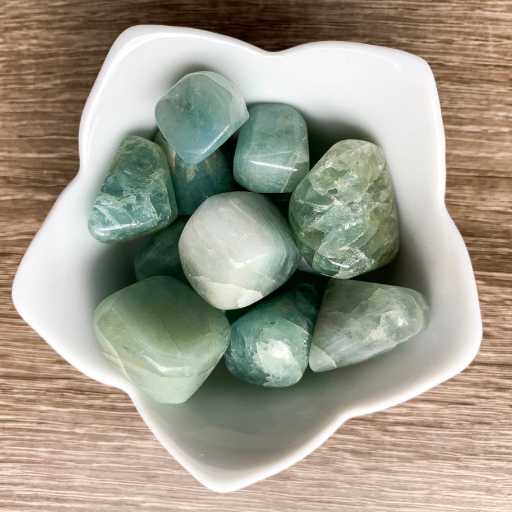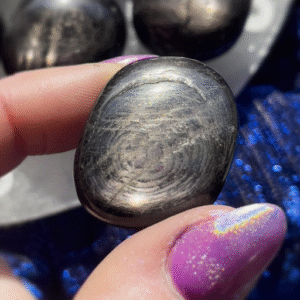Word History and Etymology of Beryl

Beryl originates from the Greek word, which referred to a precious blue-green stone. Later, it was taken into Latin from Greek as “beryllus,” meaning the same. Finally, the Middle English word—from Old French and Medieval Latin—evolved to mean the mineral we now recognize. The etymology of beryl reveals the long history of its valued status as a gemstone in various cultures and languages.
Origin of the Term “Beryl”
The word “beryl” has a very rich linguistic and scientific history. It has been said that, in the past, the origin of the term traces to the Greek berullos, a precious blue-green stone. More recent sources from gems and history suggest that the name was used more specifically for sea-green crystals, the color of water in a clear ocean.
Modern mineralogical research places beryl in a more general group of beryllium aluminum cyclosilicate minerals. The name has been assigned to many varieties, like emerald, which is green due to chromium or vanadium impurities, and aquamarine, which is blue-green due to iron impurities.
Evolution of the Name Beryl
The name “beryl” has its roots in Greek, with “bēryllos” denoting a precious blue-green stone much in vogue then, seemingly the aquamarine variety of the mineral. As time passed, the term metamorphosed and traveled through:
- Greek: “bēryllos” (precious blue-green stone)
- Latin: “beryllus”
- Old French: “beril”
- Middle English: Modern form
Geological Formation of Beryl

Beryl forms in igneous and metamorphic rocks under certain geological conditions. It forms as a consequence of magmatic processes or the interaction of hot fluids with beryllium-rich rocks. Aluminum, silicon, and beryllium must be present for beryl to crystallize.
How Beryl is Formed
Formation Process: The geological background favors the formation of beryl when high-temperature fluids interact with rocks having the required elements such as beryllium, aluminum, and silicon. In an environment with proper ranges of pressure and temperature, these elements unite to carry out their crystallization.
Beryl most commonly develops in:
- Granitic pegmatites – igneous in nature, originating from molten magma slowly cooling below the Earth’s surface
- Hydrothermal veins – where hot, mineral-bearing fluids flow through fractured rocks
- Metamorphic environments – under specific temperature and pressure conditions
Global Locations Where Beryl is Found
Famous for producing the world’s finest emeralds. Key provinces: Boyacá and Cundinamarca, including the renowned Muzo and Chivor mines.
Major producer of aquamarine, emerald, morganite, and heliodor. Minas Gerais is the primary mining region.
Extensive deposits of aquamarine and morganite in pegmatite fields across Ihorombe and Anosy regions.
High-altitude deposits in Swat Valley and Gilgit-Baltistan producing fine pink morganite and aquamarine.
Ural Mountains and Siberia host major beryl deposits, historically producing high-quality emeralds.
Notable deposits in Maine, North Carolina, and California producing various beryl varieties.
Variations of Beryl
Beryl occurs in many different colors, depending on the trace elements present in its crystal structure. Each variety offers unique beauty and characteristics:
| Variety | Color | Coloring Element | Rarity |
|---|---|---|---|
| Emerald | Deep Green | Chromium & Vanadium | Rare & Precious |
| Aquamarine | Pale to Deep Blue | Iron | Common |
| Morganite | Pink to Peach | Manganese | Moderately Rare |
| Heliodor | Golden Yellow | Iron | Uncommon |
| Goshenite | Colorless | Pure (No impurities) | Common |
| Red Beryl (Bixbite) | Red | Manganese | Extremely Rare |
Aquamarine: The Blue Beryl
The aquamarine derives its name from Latin, with “aqua” meaning water and “marina” meaning seawater. It is well known for its hues of light to dark blue, some leaning towards bluish-green, which capture the essence of calm ocean water.
Key Characteristics:
- Hardness: 7.5 to 8 on the Mohs scale
- Clarity: Generally excellent, often inclusion-free
- Pleochroism: Shows varying color intensities from different angles
- Birthstone: March birthstone
- Anniversary stone: 19th wedding anniversary
Notable specimen: The world’s largest aquamarine stone, weighing almost 10,363 carats, is known as the Dom Pedro Aquamarine, originating from Brazil.
Emerald: The Green Gemstone
Among the most sought-after precious stones on Earth, emerald is favored for its rich green hue. This awe-inspiring gemstone is a variety of the mineral beryl, wherein traces of chromium and vanadium impart the green color to the stone.
Historical Significance: Ancient Egyptians and Cleopatra are said to have donned emeralds, considering fertility and rebirth to be represented by these stones. Colombian emeralds lead the world in production, accounting for nearly 70-90% of high-quality stones.
Distinguishing Features:
- Inclusions: Known as “jardin” (garden in French), these give character to the stone
- Hardness: 7.5 to 8 on the Mohs scale
- Value: Can exceed diamonds in price for highest quality specimens
- Enhancement: Often treated with oil to improve clarity
Cultural Significance of Beryl

Because of its brilliant colors and mystical properties, beryl had a huge cultural impact throughout history. The gemstone has been valued across civilizations for both its beauty and attributed metaphysical properties.
Symbolism Across Different Cultures
| Culture/Civilization | Symbolism & Beliefs | Primary Use |
|---|---|---|
| Ancient Egypt | Protection, eternal youth, fertility | Royal jewelry, burial artifacts |
| Ancient Greece & Rome | Rejuvenation, love, health, freshness | Intaglios, seals, jewelry |
| Ancient India | Divine favor, clarity of thought, harmony | Religious ceremonies, sacred crafts |
| Medieval Europe | Protection for travelers, mental sharpness | Crystal balls, fortune telling |
| Maritime Cultures | Safe passage at sea, protection | Sailor’s talismans |
Spiritual and Metaphysical Properties
Modern practitioners emphasize the capacity of this gemstone to chase away negativity and enhance positive energies, thereby earning its place in countless meditation ceremonies and spiritual rites.
Attributed Properties:
- Mental Clarity: Enhanced focus and concentration
- Emotional Balance: Stress relief and calm
- Chakra Association: Solar plexus and heart chakras
- Communication: Improved self-expression (especially aquamarine)
- Love & Healing: Heart healing and unconditional love (especially emerald)
Physical and Chemical Properties

Chemical Formula: Be?Al?Si?O?? (Beryllium aluminum cyclosilicate)
Key Physical Properties
| Property | Value/Description |
|---|---|
| Crystal System | Hexagonal |
| Hardness | 7.5 – 8 on Mohs scale |
| Specific Gravity | 2.63 – 2.92 |
| Luster | Vitreous (glassy) |
| Transparency | Transparent to translucent |
| Optical Property | Pleochroic (shows different colors from different angles) |
Durability and Practical Considerations
Beryl’s hardness of 7.5 to 8 on the Mohs scale makes it suitable for daily wear jewelry, though it requires proper care:
- Scratch Resistance: Good resistance to everyday wear
- Cleavage: Can chip or fracture under sharp impacts
- Heat Sensitivity: Avoid exposure to extreme temperatures
- Chemical Sensitivity: Avoid harsh chemicals that may affect luster
Comparison with Other Gemstones

Beryl stands out from other gemstones owing to its unmatched set of properties and variations. Here’s how it compares to other popular gemstones:
| Gemstone | Hardness | Color Range | Rarity | Price Range |
|---|---|---|---|---|
| Beryl (Emerald) | 7.5-8 | Green varieties | Rare | High to Very High |
| Diamond | 10 | Colorless, fancy colors | Common to Rare | High to Very High |
| Ruby/Sapphire | 9 | Red (ruby), all colors except red (sapphire) | Rare | High to Very High |
| Beryl (Aquamarine) | 7.5-8 | Blue varieties | Common | Moderate to High |
Frequently Asked Questions (FAQs)
Beryl refers to a group of minerals that are valued as gemstones. The most famous varieties include emerald and aquamarine, which are known for their stunning colors and clarity. The meaning of beryl often encompasses notions of beauty and rarity, making it a highly sought-after precious stone in jewelry.
The word “beryl” has its origins in the ancient Greek term “β?ρυλλο?” (bēryllos), which referred to a precious stone. This term has evolved through various languages and interpretations, reflecting the gemstone’s long-standing significance in history and culture.
In the context of the Bible, particularly in Smith’s Bible Dictionary, beryl is mentioned as one of the stones on the breastplate of the high priest. It symbolizes purity and clarity, often associated with wisdom and spiritual insight in biblical texts.
Beryl comes in a variety of colors, with each type having its unique characteristics. The most well-known varieties include emerald (green), aquamarine (blue), golden beryl, and pink beryl. The red variety, known as bixbite, is particularly rare and valued for its vivid hue.
Beryl is typically found in granite pegmatites and metamorphic rocks. Mining locations for beryl include Brazil, Colombia, Zambia, and Madagascar, where gem-quality beryl is extracted for use in jewelry and other decorative items.
Beryl has a great hardness, rated at 7.5 to 8 on the Mohs scale. This makes it a durable gemstone suitable for various types of jewelry. The hardness varies slightly depending on the specific variety of beryl and the presence of impurities.
Blue beryl, often referred to as aquamarine, is a popular variety known for its serene blue-green color. Unlike other beryl varieties, blue beryl’s color is primarily due to the presence of iron impurities, giving it a distinct appearance that is highly prized in the gemstone market.
Reference Sources
- Smithsonian National Museum of Natural History: Beryl (var. heliodor)
- Calvin University: Beryl [Be Al(SiO )] Beryl var. Aquamarine with Muscovite
- Loyola Marymount University (LMU): Unlock the Secrets of Beryl: Its Profound Meanings and Mystical Properties








